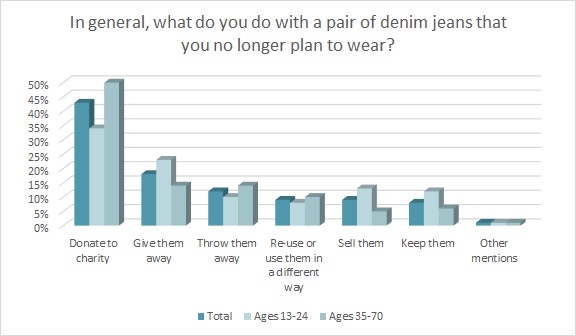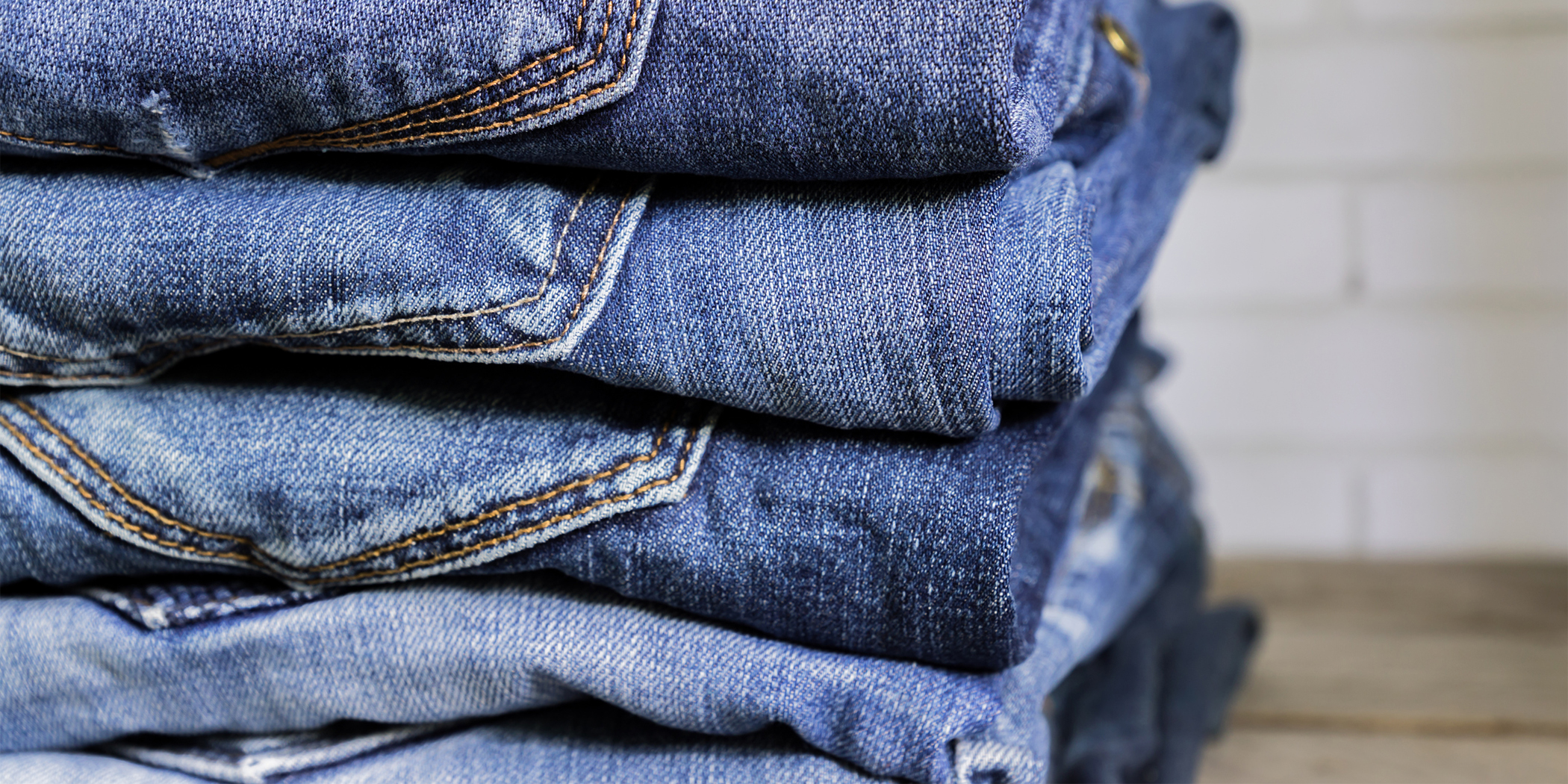When people talk about America the Beautiful, they’re definitely not referring to the 292.4 million tons of waste — which includes more than 17 million tons of textiles — the country generated in 2018, according to the Environmental Protection Agency (EPA). But on November 15, America Recycles Day aims to improve both the country and the planet by encouraging more mindfulness in consumption, promoting the benefits of recycling and explaining how consumers can both “recycle more and recycle right.” [quote]
America Recycles Day began in 1994 and is now a Keep America Beautiful program, one that strives to inspire communities and individuals to not only reduce landfill waste, but also conserve natural resources and burn less fossil fuel.
The latest national recycling day comes at a time when America is generating more solid waste than ever. The nearly 300 million tons produced a few years ago — the latest figure from the EPA — is an increase from 268.7 million tons in 2017, 208 million tons in 1990 and 88 million tons in 1960. While the United States accounts for less than 5 percent of the global population, it produces about 12 percent of global municipal solid waste (MSW), making us the biggest producer of waste, according to Statista.
Of the 292.4 million tons of garbage generated in the U.S. in 2018, textiles accounted for 5.8 percent or more than 17 million tons, according to the EPA. A portion of the textiles (9.3 percent or 3.2 million tons) was non-recyclable so these materials went through a combustion process that converted the waste materials into usable heat, electricity or fuel. But combustion isn’t as preferable as recycling. And just 2.5 million tons of those textiles were recycled. That means, that of the 146.1 million tons of trash that were dumped in the nation’s landfills, textiles account for 11.3 million tons, or 7.7 percent.
Currently, the EPA has set a goal for an overall 50 percent recycling rate by 2030, up from the mid-30 percent range it’s been in since the 1990s.
To help consumers reach that goal, Cotton Incorporated is again incorporating its Blue Jeans Go Green™ program by encouraging a social initiative, the third annual #DenimStackChallenge. Started in 2006, the Blue Jeans Go Green™ program collects old denim, made from high cotton content, so it can be recycled back to its original fiber state and transformed into useful new products such as building insulation, thermal packaging insulation, pet bed inserts, and more. The #DenimStackChallenge tasks consumers to take inventory of their denim, taking pictures of their denim “stacks” and sharing on social media, and then recycling those pieces they can no longer wear.
Since the Blue Jeans Go Green™ program began, more than 1,950 tons of denim have been diverted from landfills, and more than 3,900,000 pieces of denim have been recycled. In 2021 alone, more than 60,000 pieces of denim have been collected so far in the first three quarters through the Zappos for Good mail-in program, in addition to what has been collected by individuals and retailers.
Among the consumers who have participated in the Blue Jeans Go Green™ program, 80 percent said they decided to contribute because they’re “trying to be more sustainable or environmentally conscious,” according to Cotton Incorporated’s Blue Jeans Go Green™ Program Survey. Consumers also said they liked the fact that their denim goes toward helping communities (80 percent). They also said they don’t know of any other denim recycling program (80 percent). Consumers said participating in the Blue Jeans Go Green™ program “makes me feel like I have done something good” (60 percent), and they prefer to keep their unwanted denim items out of landfills (60 percent).
The Blue Jeans Go Green™ program invites consumers to drop off their old worn cotton denim pieces at participating retailers or local events. When dropping off at stores, shoppers are often given either money toward or a percentage off their next denim purchase. Some of this year’s retailers include Industry Standard, Just Black Denim, Paige denim, PacSun, and Levi’s®.
On World Cotton Day, October 7, PacSun announced its involvement with Cotton Incorporated’s Blue Jeans Go Green™ program to launch the “PacDenim for Good” initiative.
“As a brand dedicated to inspiring positive development with fashion, we firmly believe that small changes today will result in a better tomorrow,” said Brie Olson, President of PacSun. “We are excited to introduce PacDenim for Good as a continuation of our journey to a more sustainable future.”
More than 2 out of 5 consumers (43 percent) say they donate their old jeans they no longer plan to wear, according to the 2020 Cotton Incorporated’s Lifestyle Monitor™ Survey. That’s followed by 18 percent who plan to give them away, 12 percent who intend to throw them away, and 9 percent who expect to re-use them in a different way, such as for cleaning rags or craft projects.

But brands and retailers should note that nearly 70 percent of consumers say they are or would be interested in donating their old denim jeans/garments to be upcycled into housing insulation that is given to programs like Habitat for Humanity, according to the Monitor™ research.
The majority of consumers (38 percent) say they would be most influenced to donate their old denim if a nearby retailer would accept denim for upcycling, according to the Monitor™ research. They would also be inclined to contribute if retailers offered a discount on new denim in their stores (36 percent). Another 33 percent say they would be inspired to give up their jeans if they received more information about denim upcycling and its environmental benefits, while 32 percent said they’d donate if they could mail their denim contribution to the brand/company for free.
Consumers who wish to recycle by mail are in luck. In 2019, Zappos for Good joined the Blue Jeans Go Green™ program and has since encouraged denim owners to pack their items (up to 50 pounds and should contain at least 90 percent cotton denim) in any shipping box they have. Zappos for Good supplies prepaid shipping labels consumers can print out and attach to their boxes, which can then be dropped off at any local Continental U.S. UPS store or drop off location.
Community denim drives in neighborhoods and offices are also held as part of the Blue Jeans Go Green™ program. And denim collections are held at K-12 schools, colleges, and universities. More than 100 educational organizations have helped collect more than 300,000 pieces of denim. This year, in collaboration with The Week Junior, the Blue Jeans Go Green™ program is inviting children ages 8-to-14 to design a recycling-inspired T-shirt that represents what “doing good in denim” means, or how old denim could be reused or recycled to help the planet.
Cotton Incorporated’s denim recycling program is far-reaching and looks to involve as many consumer demographics as possible. By promoting action and advocacy, Cotton Incorporated seeks to harness the collective power of community to build a bridge between sustainability and circularity, returning old denim to its original cotton state and renewing it through the many possibilities of recycled denim.
